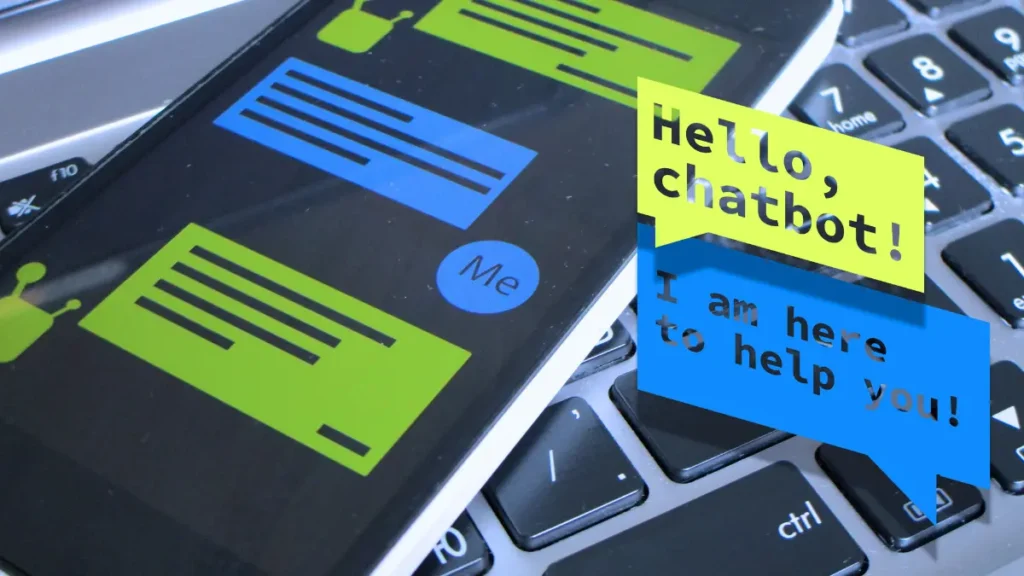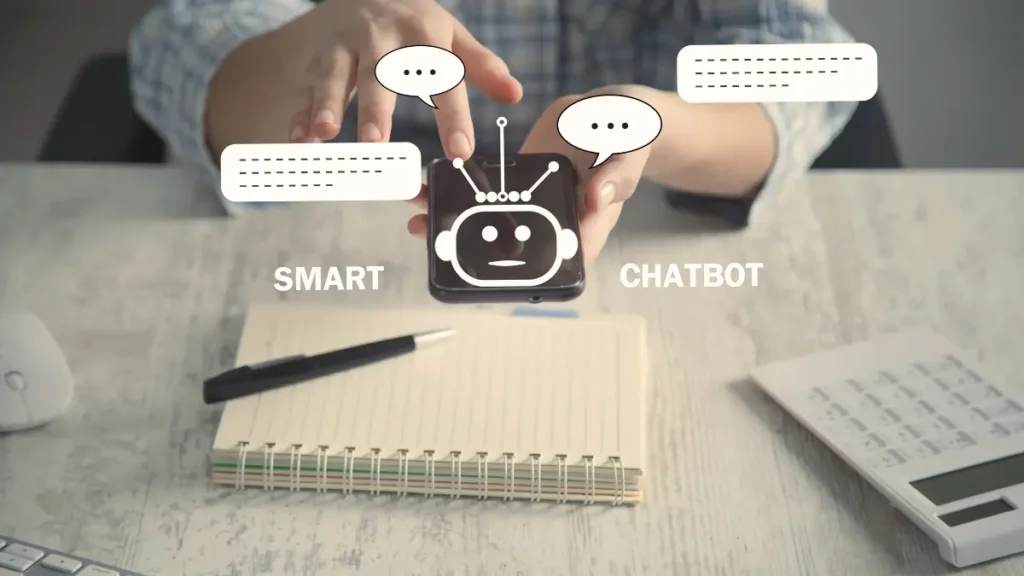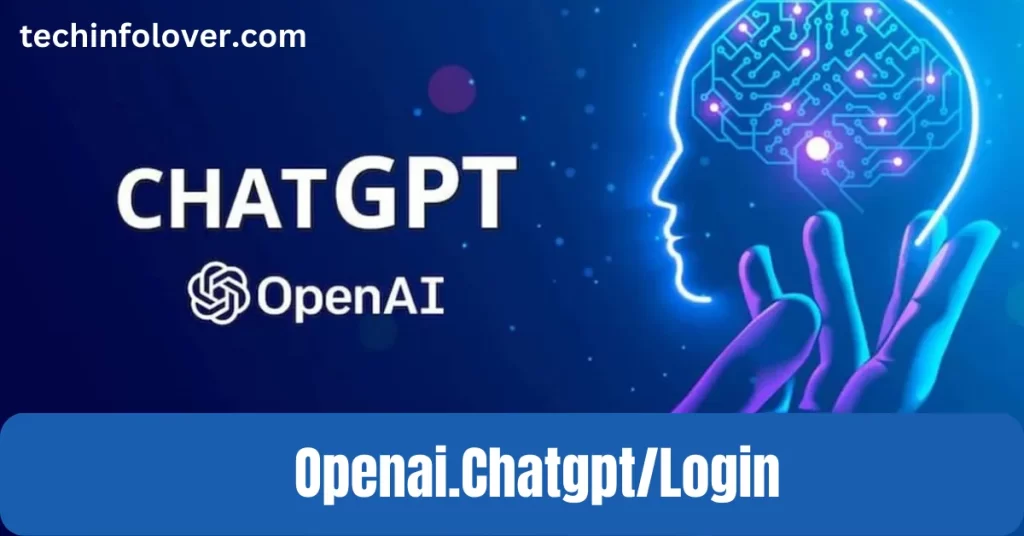Education Chatbots: You’re stressed and overwhelmed. Between classes, assignments, and extracurriculars, you barely have time to breathe. It feels like your professors are speaking a foreign language half the time. And don’t even get me started on the administration. You’ve been sent from department to department trying to get a simple question answered. There has to be a better way, right? Enter education chatbots. These AI-powered bots aim to revolutionize the student experience by providing quick, personalized support.
From answering FAQs to giving feedback on assignments, chatbots promise to make your life as a student infinitely easier. But are they really the future, or just another tech fad? Let’s explore whether these bots can actually enhance learning outcomes and create a more engaging campus experience. The future of higher ed could be just a conversation away.
How Education Chatbots Are Revolutionizing Student Engagement

If you’re in higher education, you know that student engagement is key. Keeping students actively involved in their learning and connected to campus resources is crucial for retention and success. This is where education chatbots come in.
AI-Powered 24/7 Assistance
Education chatbots leverage artificial intelligence and natural language processing to provide personalized support for students anytime, anywhere. Students can ask questions, get advice and connect with services through an intuitive chat interface. This on-demand support helps reduce frustration and keeps students engaged.
Personalized Learning at Scale
Chatbots excel at delivering personalized learning experiences at scale. They can get to know students’ needs, interests and goals to recommend courses, activities and resources tailored to each individual. Education chatbots also facilitate personalized feedback and guidance to help students stay on track.
Improved Student Outcomes
By providing interactive support and tailored learning experiences, education chatbots are proven to positively impact student outcomes. Studies show they can improve learning, increase pass rates, and boost graduation numbers, especially for at-risk or disadvantaged students.
While education chatbots may not replace human teachers, they are revolutionizing student engagement through personalized, data-driven interactions. As the technology continues to evolve, these AI helpers will become even more sophisticated learning companions. The future of higher ed is conversational.
The Benefits of AI Chatbots for Higher Education Institutions
Chatbots are more than just a fad – they’re becoming a necessity for higher education institutions. By implementing chatbots, colleges and universities can boost student engagement, improve the student experience, and save time and money.
Boost Student Engagement
Chatbots make it easy for students to get answers to questions anytime, anywhere. Students today expect instant responses, and chatbots can provide that 24/7. This convenience and quick access to information helps keep students engaged with their institution. Chatbots also allow for personalization, tailoring responses to individual students based on their programs, interests and needs. This personalized support leads to higher student satisfaction and engagement.
Improve the Student Experience
From the initial recruitment process through graduation, chatbots enhance the student experience. Prospective students can get answers to questions about programs, admissions, financial aid, housing, and more before even setting foot on campus. Enrolled students can get help with everything from choosing courses to paying tuition bills to applying for graduation. By facilitating various administrative tasks and queries, chatbots make life easier for students so they can focus on their education.
Save Time and Money
Chatbots never sleep, so they can handle many routine student queries, freeing up staff and faculty to focus on high-impact initiatives. This results in significant time and cost savings for the institution. Chatbots also provide data and analytics to better understand student needs, enabling more targeted interventions and support. Overall, chatbots are a smart investment that pays off through improved student success, increased enrollments and a better bottom line. The future of higher education includes AI, and chatbots are leading the way.
Use Cases: Administrative Tasks Made Easier With Chatbots
Chatbots can help higher education institutions streamline various administrative processes and better support students. Here are some examples of how chatbots are being used:
Automating the Admissions Process
The admissions process requires handling a high volume of inquiries from prospective students. Chatbots can help automate responses to common questions about programs, admission requirements, deadlines, and more. Georgia State University developed a chatbot called Claude to assist prospective students in the admissions process. Claude can answer questions, provide information on programs and connect students with admissions counselors. This helps save time for both students and staff.
Providing Personalized Student Support
Once students have enrolled, chatbots can continue to support them in their learning journey. Chatbots can help students access information on classes, assignments, events and deadlines. They can also provide personalized guidance and recommendations based on a student’s program and progress. For example, a chatbot may suggest tutoring resources or important deadlines a student should be aware of based on their unique situation.
Streamlining Administrative Tasks
Higher education institutions have many administrative tasks, like managing student records, processing requests, and handling payments. Chatbots can help automate and streamline these repetitive, high-volume tasks to save time and resources. For example, a chatbot could help students request transcripts, change majors, or pay tuition bills and fees online through a simple conversation. The chatbot handles the administrative process in the background, freeing up staff to focus on more complex tasks.
Chatbots show a lot of promise for improving student support services and streamlining administrative processes in higher education. With further development, education chatbots could transform the student experience by providing personalized learning experiences, feedback and support at scale. The future looks bright for education chatbots and the benefits they can provide to students, staff and institutions.
Improving the Learning Experience With Personalized Support
Chatbots can provide personalized support and feedback for students, enhancing their learning experience. With machine learning and natural language processing, chatbots get smarter over time and can understand each student’s needs, questions, and struggles.
Personalized Feedback and Guidance
Students can ask chatbots questions about course materials, assignments, projects, or other topics and receive instant feedback and guidance. The chatbot will get to know the student over time and can provide responses tailored to their unique needs and learning style. This personalized support helps students feel more engaged and stay on track.
Answering Common Queries Quickly
Chatbots are well suited to handle frequently asked questions from students. They can quickly provide answers to common questions about deadlines, resources, events, and more. This helps reduce the burden on professors and staff, allowing them to focus on more complex student issues. Students get instant responses to their questions, reducing frustration and anxiety.
Monitoring Student Progress
Some chatbots are able to monitor student progress and performance over time. They can detect if a student seems to be struggling or falling behind and notify the professor. The professor can then reach out to the student to offer additional help and support. Chatbots may also suggest resources or tools to help students improve in certain areas. This proactive support enabled by AI can make a big difference in student outcomes and success.
Streamlining Administrative Tasks
Simple administrative tasks like helping students sign up for courses or access resources can be automated using chatbots. They can guide students through processes like selecting courses, accessing library resources, paying fees, and more. This frees up staff to focus on more meaningful work, while allowing students to complete routine tasks on their own schedule.
Chatbots show a lot of promise for enhancing student engagement and the learning experience in higher education. With continued progress in AI and personalization, chatbots will become an even more valuable tool for supporting students and improving their outcomes. The future is bright for education chatbots.
Chatbots for Interactive Learning and Student Feedback

Personalized Support
Chatbots can provide personalized support and feedback to students. They can track individual student progress and performance to offer customized recommendations and guidance. For example, if a student is struggling in a particular course or subject area, a chatbot may suggest additional resources for practice or revision. It may also connect the student with a tutor or advisor if needed.
Interactive Learning
Chatbots facilitate interactive learning through conversational interactions. They can pose questions to students and provide feedback on their responses to reinforce learning. Chatbots are also able to simulate real-world scenarios and conversations to help students apply their knowledge in a practical way. Some chatbots use gamification, rewarding students with points or badges for correct responses. This interactive, engaging approach supports active learning and improves knowledge retention.
Gathering Student Feedback
Chatbots provide an easy way for students to give feedback on their courses, instructors, and overall experience. Students may feel more comfortable opening up to a chatbot, especially on sensitive topics. The chatbots can ask targeted questions and capture ratings and comments from students. This valuable feedback helps educational institutions make improvements to benefit students. It also gives students a voice and a means to shape their own learning experience.
Improving Engagement
Chatbots boost student engagement through personalization, interactivity, and by providing a simple way for students to get quick answers and information. They meet students on a platform many already use regularly: messaging apps. Chatbots transform a familiar interface into an educational tool, making learning feel fresh and interesting. Their conversational nature also makes them appear more human-like, which many students find appealing and motivational. Overall, chatbots lead to higher engagement, which research shows improves motivation, comprehension, and academic achievement.
In summary, chatbots facilitate interactive learning, provide personalized support, gather useful student feedback, and improve student engagement. They have significant potential to enhance the learning experience in higher education. As artificial intelligence and natural language processing continue to advance, chatbots will become even more sophisticated, human-like, and capable of meeting students’ needs.
The Future of AI in Education: Emerging Chatbot Capabilities
Chatbots are becoming increasingly sophisticated, with new capabilities on the horizon that will further transform student engagement and support. Personalized Learning
Chatbots will gain the ability to provide personalized learning pathways based on a student’s needs, skills, interests and goals. Using data on a student’s learning progress, chatbots can recommend specific resources, assignments and learning activities tailored to their needs. Chatbots may even be able to adjust the difficulty or topic of questions and discussions based on a student’s demonstrated understanding.
Adaptive and Contextual Responses
Chatbots will become far more adaptive in how they respond to students. They will gain awareness of the context of a conversation, understand a student’s emotional state, and adjust their responses accordingly. For example, if a student seems confused or frustrated, a chatbot may provide empathy and gently guide the student to the information they need. Chatbots may even detect subtle changes in a student’s writing or speaking style that could indicate their mood or motivation level.
Proactive Support
Rather than simply responding to student inquiries, chatbots will begin to proactively monitor student progress and reach out with support when needed. For example, chatbots may detect if a student is falling behind or struggling in a particular course and send an alert to the student with offers of help or resources to get them back on track. Chatbots could also identify opportunities for students to improve their learning, such as pointing out topics they should review again or skills that would benefit from more practice.
Seamless Integration
The capabilities of chatbots will expand beyond conversation interfaces. Chatbots will integrate directly into learning management systems, online courses and mobile apps. Students will engage with chatbots through interactive lessons, social learning platforms, and augmented or virtual reality experiences. Chatbots will also integrate with other technologies such as intelligent tutoring systems to provide seamless support for students anytime and anywhere.
The future of chatbots in education is very promising. As the technology continues to evolve, chatbots will transform how students learn and institutions support student success. Chatbots have the potential to provide personalized, contextual and proactive support at scale – helping students achieve their full potential.
Implementing Chatbots at Your Institution: Key Considerations
So you’ve decided to implement chatbots at your institution. Congratulations! Chatbots can be a game changer for student engagement and support. However, there are a few key things to keep in mind to ensure your chatbot initiative is successful.
Define your goals
First, determine what you want to achieve with chatbots. Do you want to improve student advising? Streamline admissions? Enhance the orientation process? Defining clear goals will shape what type of chatbot you build and how you implement it.
Choose a chatbot platform
There are many chatbot platforms out there, from IBM Watson to Anthropic AI. Evaluate different options based on your needs and technical expertise. Some platforms are easy to use but limited, while others offer more customization but require coding knowledge. Think about costs as well—some platforms are open source while others charge licensing fees.
Provide training data
Whatever platform you choose, your chatbot will need large amounts of data to learn how to respond accurately to students. Gather common questions, FAQs, and keywords related to your goals. The more data you feed the chatbot, the smarter it can become. You’ll also need to train the chatbot on the appropriate tone and responses for an educational setting.
Start small and scale
Don’t try to implement chatbots for every department and function right away. Start with a small pilot to work out any kinks, then scale up as you gain experience. You might begin with a chatbot for admissions or orientation, then expand to advising and financial aid.
Promote your chatbot
Launching your chatbot is only the first step. Promote it to students and get them engaged. Explain how the chatbot can help them and encourage them to ask questions. Track how students interact with the chatbot to continue improving it and enhancing the student experience.
With thoughtful planning and the right platform, chatbots can revolutionize student support at your institution. But start small, learn as you go, and make improvements along the way. Your students will appreciate the personal touch!
Top Education Chatbots to Know in 2024

As artificial intelligence and natural language processing continue to advance, chatbots are becoming increasingly sophisticated and widespread. The education sector is no exception. Many colleges, universities and education technology companies are developing education chatbots to enhance student engagement and support. Here are some of the top education chatbots to know:
Clara, from Anthropic, is an AI assistant created specifically for higher education. Clara can handle common student queries on topics like admissions, financial aid, courses, housing, events and more. Students can interact with Clara through web chat, SMS, voice and more.
IBM Watson created Claude, an AI-powered virtual assistant for students. Claude can answer questions, provide resources and complete administrative tasks. Claude is currently being used by institutions like Georgia State University to improve the student experience.
The language learning chatbot Claude, created by Anthropic, helps students learn new languages through conversational interactions. Students can practice speaking, improve pronunciation and learn cultural context through natural dialogs with Claude.
Jill Watson, from Georgia Tech, is a virtual teaching assistant to help professors handle routine questions from students, reducing instructors’ workloads. Jill Watson has handled over 40,000 interactions with students on topics like course logistics, deadlines and technical issues.
Wisebot, is an AI-powered chatting system with a focus on personalized support for students. Wisebot offers automated advising and counseling for students on topics like course selection, career guidance and mental health. Wisebot uses AI to provide personalized support at scale.
The education chatbots are designed to handle frequently asked questions, provide resources and complete simple tasks to improve the learning experience. As the technology continues to advance, education chatbots are likely to play an even bigger role in higher ed, offering personalized support, interactive learning and actionable insights for students. The future of education could very well involve more chatbots and less human intervention, enabling a highly personalized experience for each student.
FAQs: Your Most Pressing Education Chatbot Questions Answered
Chatbots are a hot topic in education right now, and you probably have some burning questions about how they work and what value they can provide. Let’s dive into some of the most frequently asked questions about education chatbots.
How do education chatbots work? Education chatbots are powered by artificial intelligence and natural language processing which allows them to understand questions and requests from students, teachers, and admins, then provide an appropriate response. They get “smarter” over time by learning from interactions.
Can chatbots replace human advisors and counselors? No, chatbots are designed to complement human staff, not replace them. They handle simple, repetitive questions, freeing up staff to focus on more complex issues. Chatbots also provide 24/7 assistance for quick questions or issues, even when offices are closed.
What types of tasks can education chatbots perform? Chatbots can handle a variety of administrative and advising tasks like:
• Answering questions about admission requirements, class registration, financial aid, etc.
• Providing campus directions and event information
• Delivering reminders about important deadlines
• Conducting surveys and gathering feedback
• Offering mental health resources and advice
• Helping students discover courses that match their interests
Will students and staff actually use education chatbots? Chatbots have been shown to increase student engagement and satisfaction. When implemented well, students and staff come to rely on chatbots as a trusted source for information and support. Chatbots also appeal to digital-first generations who expect instant, personalized responses.
How much does an education chatbot cost? The cost depends on the complexity and features, but prices typically range from $10,000 to $100,000 per year. Some chatbot providers offer lower-cost or free trials so you can pilot the technology before committing to a long-term investment.
In the end, education chatbots have significant potential to improve student experiences, support staff, and drive operational efficiencies. While chatbots may not be the solution for every school, they are worth exploring as an innovative way to better serve your students and community.
Conclusion
At the end of the day, chatbots have the potential to completely transform higher education. With their ability to provide personalized and interactive support to students 24/7, chatbots are poised to revolutionize the way students learn and engage. Sure, there are still challenges around developing the right technology and ensuring proper implementation. But by starting small and focusing on specific use cases, institutions can begin realizing the benefits of AI and conversational interfaces. Who knows – maybe someday we’ll all be earning our degrees with a little help from our robot friends! And that future doesn’t seem so far off.



